Since my introductory article on the topic, 2018’s “Combining Relative Rotation Graphs and the “Turtle Soup” setup“, I have mentioned and used this strategy a few times in my articles and analyses. The main goal has been to combine the power of RRG and this short-term trading strategy to find short-term trading opportunities.
The approach is to run the Turtle Soup scan, for which the scan code is available in the article, and plot the resulting symbols on a (daily) Relative Rotation Graph to see if there are any cases where the rotation on the RRG aligns with the Turtle Soup trigger. The only “problem” was that the Turtle Soup strategy is a short-term, often intraday, trading strategy, and the rotations on the daily RRG, which used to be the shortest time frame, were too slow. With the introduction of the intraday time frames for Relative Rotation Graphs, this issue is no longer a problem, as we can plot the results on an intraday basis as well, getting an even better and more realistic handle on the short-term rotations for the symbols which triggered a TS buy setup.
In this article, I will walk you through the steps and the results for Friday, 19 August. I have this scan running automatically, and it sends me an SMS when the conditions are met. I already received an SMS just after 10am, half an hour after the opening. At that time, it had 7 results; DEI, ENOV, FTNT, HALO, NVST, TMHC, YETI
At the time of writing this article, around 2:15 pm, 6 more symbols triggered a setup, as you can see in the image below.
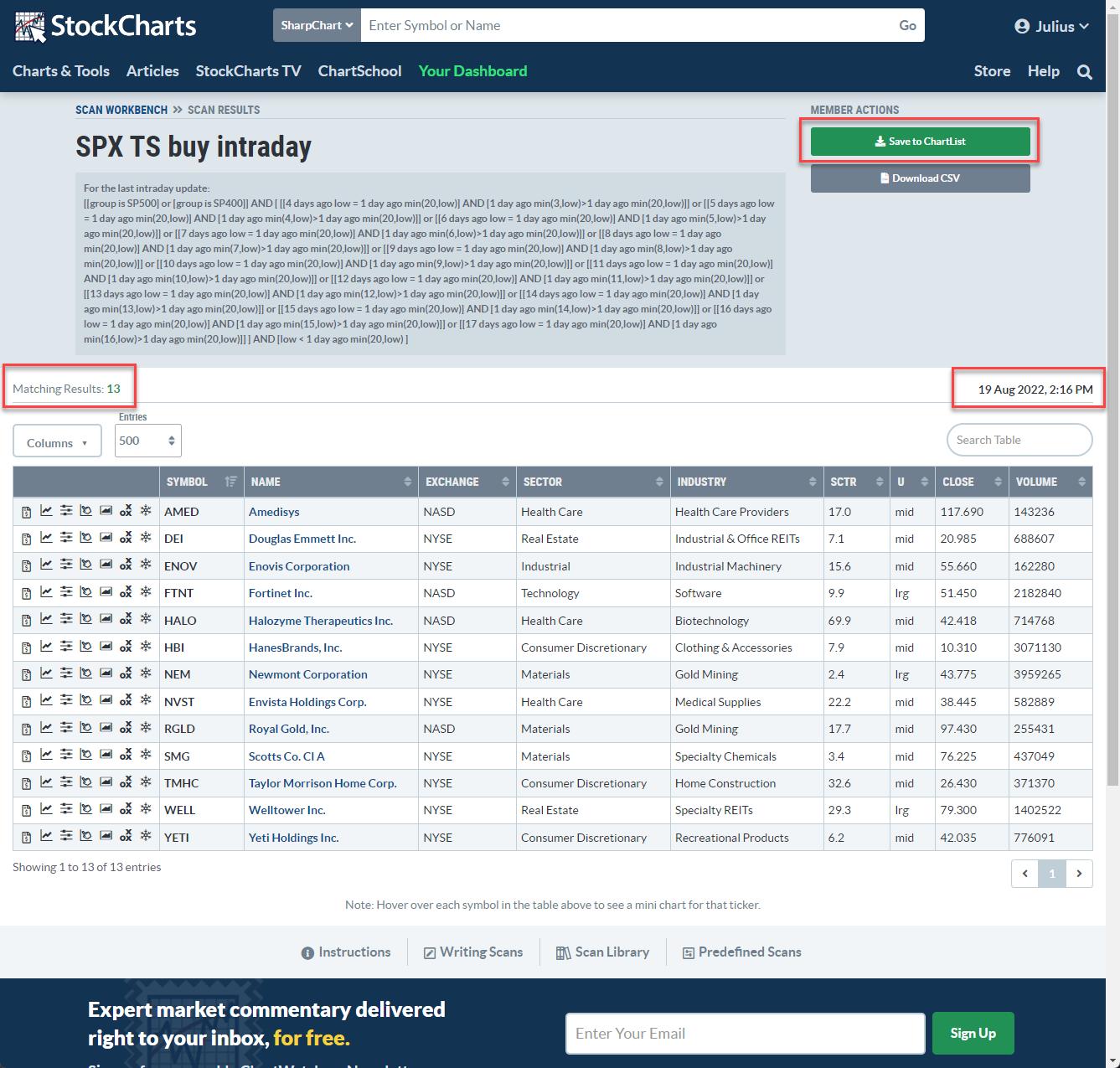
I have a ChartList called “SPX TS buy intraday”, which I always replace with the latest results of this scan. From the ChartList, I can immediately open up the RRG from the “View List As” menu option.
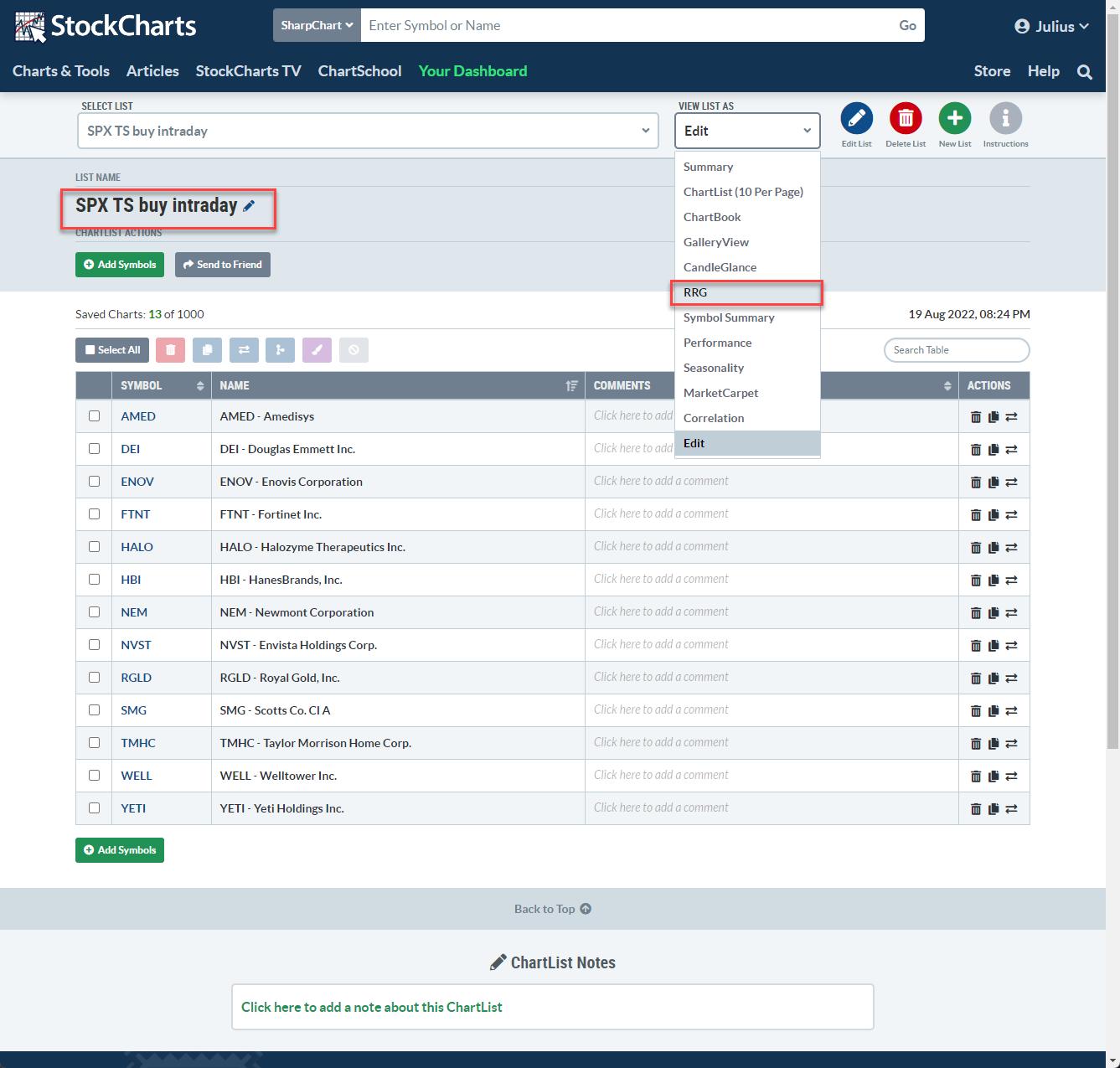
At 10am, the RRG had 7 symbols. Using a 30-minute timeframe, it looked like this: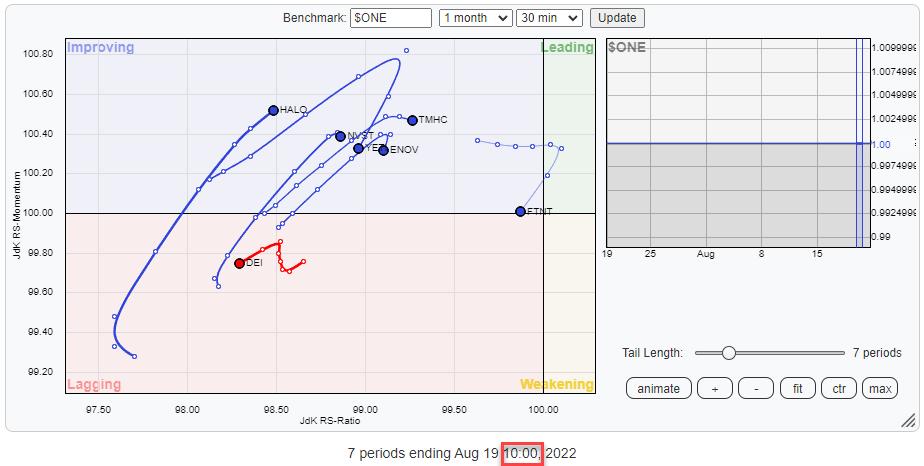
From an RRG perspective, the only tails that looked slightly promising were HALO, NVST and TMHC. Although the latter two had already started to lose relative momentum. The triggers for these stocks, a break back above the previous 4-day low with a bit of margin, were as follows:
- HALO: 41.81 –> entry stop at 42.00
- NVST: 38.69 –> entry stop at 39.90
- TMHC: 26.93 –> entry stop at 27.10
To monitor these charts and levels, I like to use ACP, as it streams data and allows me to have two charts with different timeframes open at the same time side-by-side, and the scan results in the sidebar so I can easily click the symbol to update both charts.
In my ACP setup, I have two chart widgets open, one with the daily chart to monitor the setup and one with a 30-minute chart to track during the day for execution. NVST and TMHC did not get triggered, as they never got back to their previous 4-day low level.
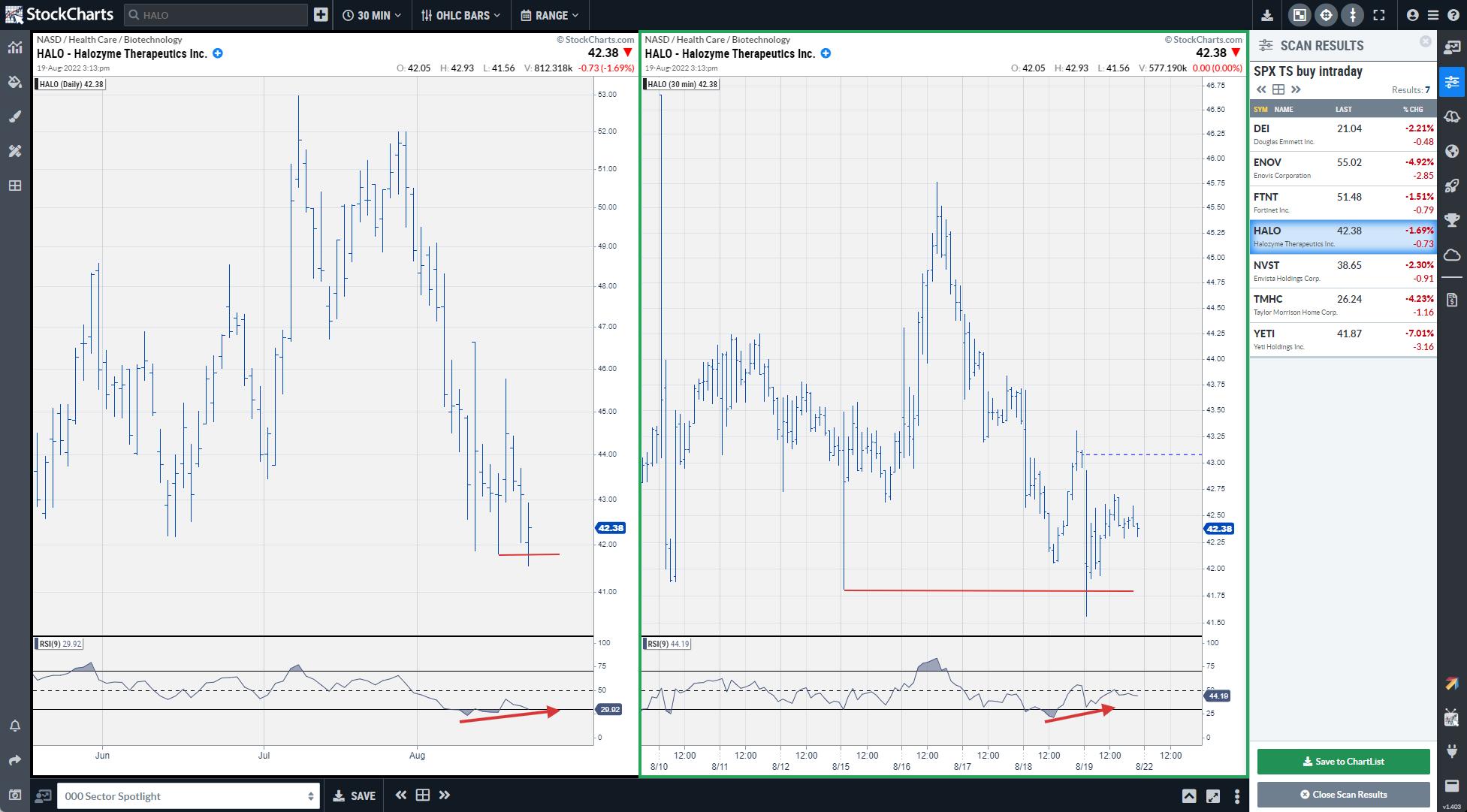
HALO triggered its buy signal around 10am, as it immediately bounced back up after an initially lower opening and then triggered its entry stop at 42. During the day so far, HALO has reached a high of 42.93 and is trading around 42.40/50 as I am writing this.
For some traders, this would already have been enough to close the trade (exits using this strategy are subjective) but I think it would be safe to say that the stop-loss should now be moved up to the entry-level to prevent this trade ending in a loss.
After running the scan around 2pm, 6 new symbols showed up in the results. The RRG for these symbols at that time looked like this: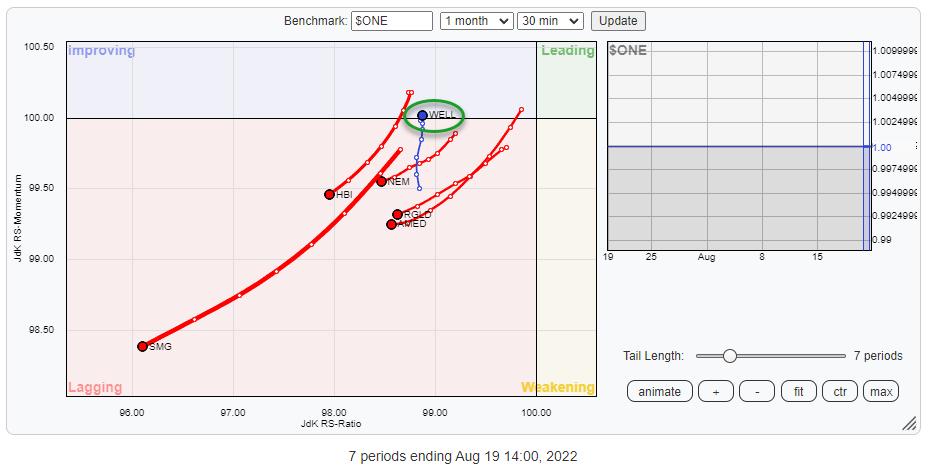
There is only one stock that really stands out from a positive point of view, which is WELL. The trigger for WELL was at 79.14 (its previous 4-day low which was set on 8/5).
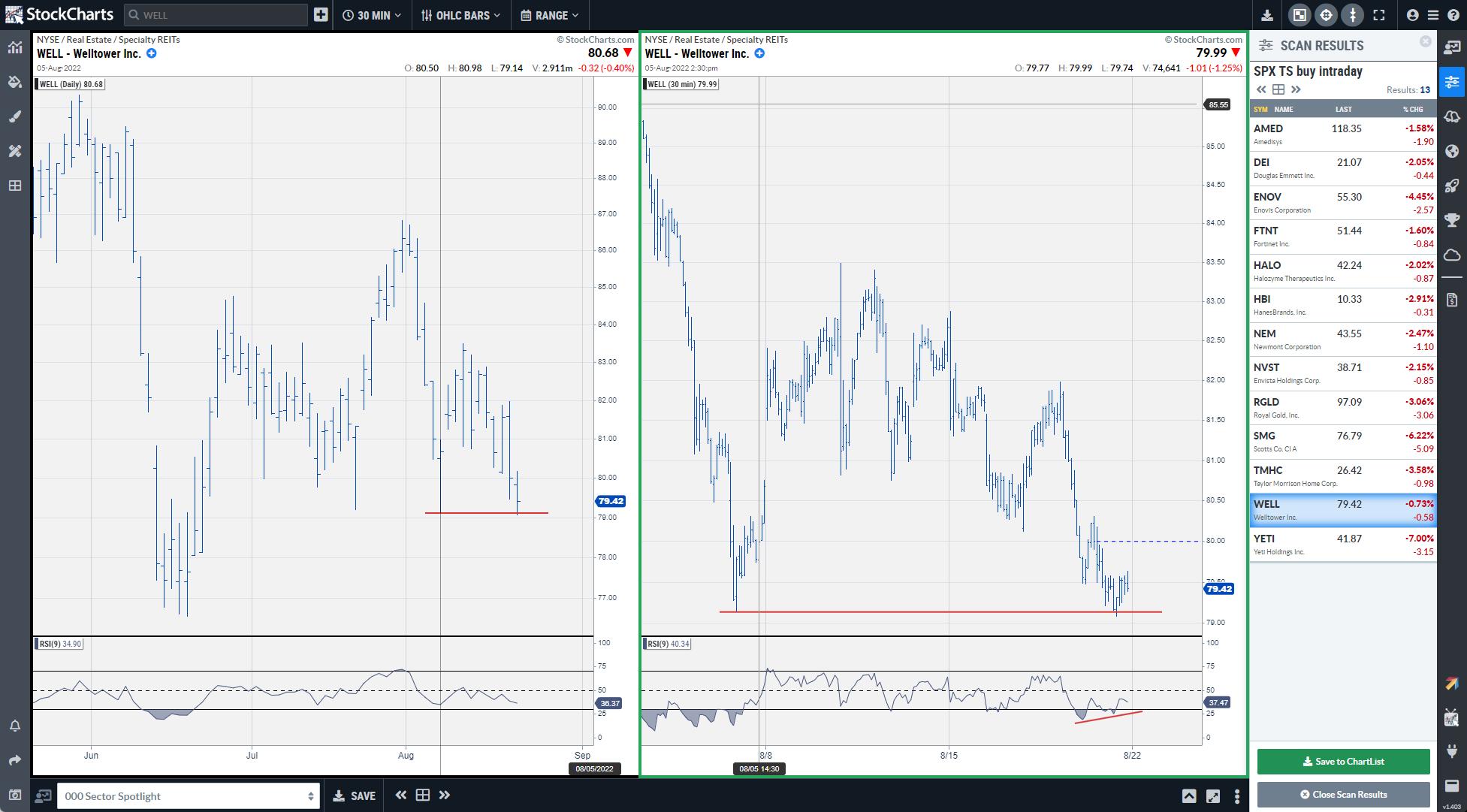
The chart reveals that the setup was generated on the 30-min bar at 1pm and triggered half-an-hour later at 1:30 pm around 79.20.
*Me running this scan earlier and paying more attention would have triggered it at that time 😉
At 3pm, WELL is trading around 79.40 and a stop should still be present just below today’s low so around 79. Probably not the two best trades in the world for today, but I wanted to show you how you can have the new intraday RRG time frames interact with other short-term trading techniques to maybe get a little bit more of an edge.
Have a great weekend and #StaySafe, –Julius
Julius de Kempenaer
Senior Technical Analyst, StockCharts.com
Creator, Relative Rotation Graphs
Founder, RRG Research
Host of: Sector Spotlight
Please find my handles for social media channels under the Bio below.
Feedback, comments or questions are welcome at Juliusdk@stockcharts.com. I cannot promise to respond to each and every message, but I will certainly read them and, where reasonably possible, use the feedback and comments or answer questions.
To discuss RRG with me on S.C.A.N., tag me using the handle Julius_RRG.
RRG, Relative Rotation Graphs, JdK RS-Ratio, and JdK RS-Momentum are registered trademarks of RRG Research.


